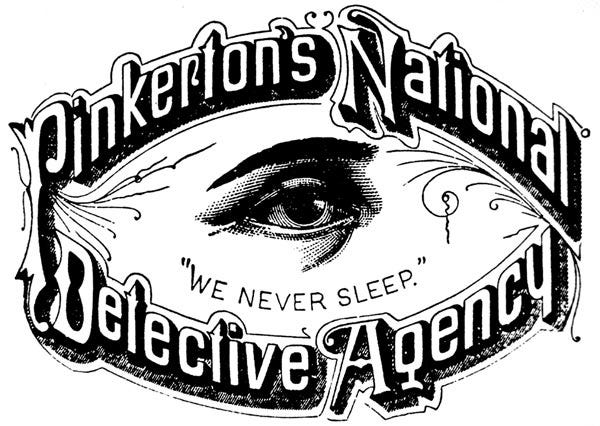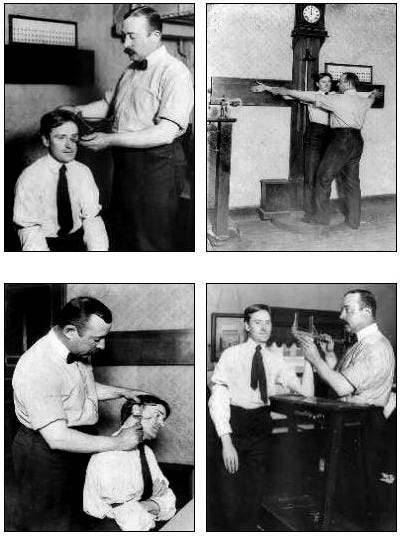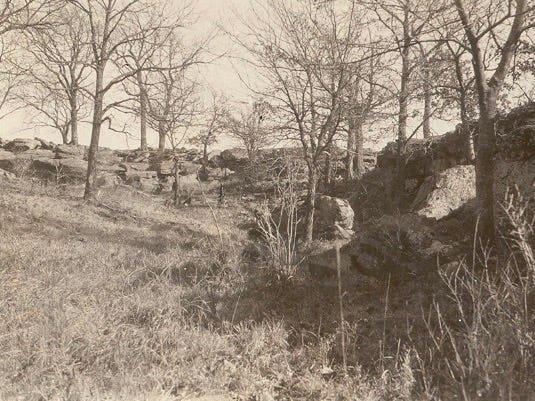The Devil's Disciples: Unraveling Early Forensic Investigations
Written on
Chapter 1: Introduction to the Devil's Disciples
The term "detect" originates from the Latin word meaning "to unroof." This ties back to legends portraying the devil's agents as peering into homes by removing roofs, hence the label "Devil's Disciples" for detectives. — David Grann, Killers of the Flower Moon
In the latest episode of the Murder Shelf Book Club Podcast, my co-host Jill and I explored the bestselling book Killers of the Flower Moon by David Grann. This gripping narrative features elements of murder, intrigue, and deception — with undercover operatives, disguises, and explosive events. Grann immerses readers in the story of the Osage Nation in Oklahoma, who became extraordinarily wealthy in the late 1800s due to the vast oil reserves beneath their land. We’re not talking about just comfortable living; this wealth was substantial — mansions, numerous vehicles, and lavish parties. This prosperity came on the heels of unimaginable suffering and hardship.
Yet, not everyone was pleased with the Osage's newfound riches. Members of the tribe began to die under suspicious circumstances, and these were not mere accidents. Set in the 1920s, a time still echoing the Wild West, law enforcement was inconsistent and often untrained in investigative techniques. After years of pursuing leads that led nowhere, J. Edgar Hoover, then head of the Bureau of Investigation (which would soon evolve into the FBI), intervened. He dispatched one of his top agents, Tom White, a former Texas Ranger, to uncover the perpetrators. Undercover, White and his team ventured into Osage territory, uncovering one of the most shocking conspiracies in American history.
This is what fascinates me: the nascent stages of crime scene investigations and forensic practices that predated Hoover's establishment of a world-renowned law enforcement agency.
The first video, The Devil's Disciples, provides an overview of this chilling history and the investigative challenges faced during that time.
Private Investigators in the Osage Murders
During the Osage murder investigation, many law enforcement agencies were reluctant to tackle crimes against Native Americans. The Osage had financial means and often hired private detectives. In Killers of the Flower Moon, Grann points out, “In the late nineteenth and early twentieth centuries, private detective agencies filled the void left by decentralized, underfunded, and corrupt sheriff and police departments.” Ironically, many private investigators shared the same dubious backgrounds as the police force, often having criminal records themselves.
In 1850, Allen Pinkerton established the first and perhaps best-known private detective agency: The Pinkerton National Detective Agency. A Scottish immigrant, Pinkerton arrived in the U.S. and became the first police detective in Chicago in 1849. His agency functioned as an intelligence network during the Civil War and was a precursor to the Secret Service. In 1861, they even foiled a plot to assassinate Abraham Lincoln before he took office. Their motto, “We Never Sleep,” symbolized a vigilant watchfulness.

Pinkerton crafted a guideline manual for his agents, acknowledging the frequent deviation from the truth in their pursuits, as agents sometimes resorted to deception to meet client demands. Many private detectives involved in the Osage case had previously worked for the William J. Burns International Detective Agency, learning from a man who would eclipse even Pinkerton's fame. Burns, described as “short, stout, with a luxuriant mustache and a shock of red hair,” earned the title of America’s Sherlock Holmes from Sir Arthur Conan Doyle. However, Burns and his contemporaries were known to cross ethical lines, engaging in acts such as breaking and entering, jury tampering, and theft.
A notable figure in the Osage investigation was Herman Fox Davis, a former private detective from the Burns agency, who was requested by the governor to look into the suspicious death of Chief Bigheart. Upon his arrival in April 1923, he was arrested and pleaded guilty to bribery.
Bertillonage: The Birth of Forensic Identification
The method known as "Bertillonage," developed by French criminologist Alphonse Bertillon in 1879, aimed to catch repeat offenders by cataloging various physical attributes for identification. This method was instrumental in the Osage murder investigation to ensure that one of the Bureau's informants, Kelsie Morrison, wouldn’t disappear.
Key identifiers included the length of his left foot, the dimensions of his head, and even the diameter of his right ear. In total, eleven measurements were taken.
“By categorizing each measurement into small, medium, and large groupings, Bertillon could classify individuals into one of 243 distinct categories. Further distinctions based on eye and hair color expanded this to 1,701 categories.” — Division of Criminal Justice Services
A “mug shot” was also introduced, a practice derived from Bertillon's work. This information was compiled into cross-referenced files for law enforcement agencies. Ida Tarbell, an influential journalist in the late 19th and early 20th centuries, noted in 1894 that once cataloged by Bertillonage, a person would be “forever spotted,” as physical measurements would always reveal their identity, regardless of efforts to disguise themselves.

While Bertillonage would eventually fall out of favor, its legacy lives on through fingerprinting and mugshots.
Coroner Inquests: A Gruesome Reality
Coroner inquests and autopsies during this period were alarmingly rudimentary. The podcast highlighted particularly grisly autopsies referenced in Killers of the Flower Moon. In Osage County, local citizens bore the responsibility of investigating crimes and ensuring order. Upon discovering the body of an Osage member, a jury of local white men was quickly assembled to determine whether the death was natural or man-made. If murder was agreed upon, their next task was to identify the perpetrator.
The autopsy was conducted on-site, often by physicians who happened to be present at the scene. The Shoun brothers, James and David, performed a grim examination after determining the victim had likely been dead for about five to seven days. No evidence was found on the victim’s clothing, and a bullet hole was discovered at the back of the head, likely from a .32 caliber bullet.

Despite attempts to locate the bullet or casing, nothing was recovered. The brothers noted the absence of an exit wound and conducted a basic examination of the brain, yielding no further findings. Additionally, two sets of tire tracks were observed, but no casts were made, and no evidence collection procedures were followed, leading to a contaminated scene by the time photographs were taken.
The investigation into the murder remained unresolved until the Bureau of Investigation intervened, but that’s a story for another time.
Modern Crime Scene Investigations
Today, the evolution of crime scene investigations and forensic practices is remarkable. Crime scenes are promptly secured to preserve evidence, and autopsies occur in sterile environments, free from public scrutiny. Elements of the Bertillonage system still echo in contemporary investigations through practices like fingerprinting and mugshots.
For those interested in early investigative techniques and the formation of the FBI, I highly recommend reading Killers of the Flower Moon by David Grann. It’s a captivating story you won’t want to miss.
The second video, “The Devil's Disciples” by Jeff Godwin illustrated by Arnold Fuscia, dives deeper into the context and implications of these early investigative practices.
Tara Rose is the co-host of the Murder Shelf Book Club, a true crime podcast. To explore more stories of serial killers and true crime, check out episodes covering figures like Ted Bundy, Wayne Nance, and the Golden State Killer. Listen on Spotify, Apple Podcasts, Stitcher, or Google Play.